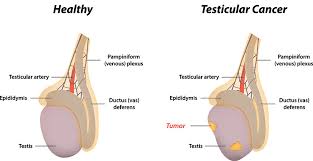At the 46th European Society for Clinical Nutrition and Metabolism (ESPEN) Congress, held in Milan, Italy, an urgent issue was raised—Europe is facing a serious malnutrition crisis that affects millions but remains underestimated. A joint session between the World Health Organization (WHO) and ESPEN highlighted the widespread malnutrition, particularly linked to aging and illness, and called for immediate, collective action.
The Italian Crisis: Aging and Illness Compounding Malnutrition
Italy is a case in point. Marco Silano, senior researcher at the Istituto Superiore di Sanità (ISS) in Rome, outlined the dire state of older adults in the country. Italy’s elderly population is rapidly increasing, with over 14 million individuals aged 65 and above. Despite their long life expectancy, their health status remains poor—3.8 million live with disabilities, and 32% have multiple chronic conditions.
While malnutrition is often associated with developing countries, Silano noted that it’s a hidden issue in Europe too. Among Italy’s elderly, the prevalence of malnutrition ranges from 3% in those living independently to 70% in nursing homes. Silano emphasized that malnutrition isn’t just a lack of calories or proteins but also includes deficiencies in essential micronutrients or, paradoxically, obesity.
“Food insecurity, loneliness, and economic struggles after retirement are key drivers,” Silano said. “This creates a vicious cycle, as malnutrition leads to chronic diseases, which are further exacerbated by poor nutrition.”
The Italian Ministry of Health has begun implementing new guidelines, though progress remains inconsistent. Localized efforts like home and parenteral nutrition support in regions like Lombardy have emerged, but there’s a strong need for nationwide standardization, said Silano.
Europe’s Struggles: Malnutrition in Hospitals and Beyond
The malnutrition crisis isn’t confined to Italy. Eric Fontaine, a nutritionist from Université Grenoble Alpes in France, presented alarming statistics from French hospitals. A screening at the Grenoble Alpes University Hospital revealed that 30% of patients—about 17,353 out of 57,900—were malnourished.
These numbers, Fontaine warned, are likely to be mirrored across Europe. According to WHO data, 30-50% of hospitalized patients in Europe suffer from malnutrition, with particularly high rates among oncology patients (40%) and the elderly (up to 70%). Fontaine emphasized the need to present these statistics in a way that compels policymakers to act.
“When we tell policymakers that hospitals have a malnutrition problem, they might not respond,” Fontaine explained. “But when we say there are 2 million malnourished people, then they understand the urgency.”
The Need for Updated Diagnostic Criteria
A major obstacle to addressing malnutrition is the difficulty in diagnosing it. Tatjana Hejgaard, a senior adviser to the Danish Health Authority, called for new criteria in the International Classification of Diseases (ICD) system. The current reliance on body mass index (BMI) as a diagnostic tool is outdated, she argued.
“Patients with a BMI higher than 18.5 are often excluded from nutritional interventions, despite being at significant risk,” Hejgaard said. She stressed that malnutrition can be present in patients with higher BMIs, particularly in disease-related cases. “We need a new diagnostic code that reflects the full spectrum of malnutrition.”
Global Action: A Call for Support and Sustainable Development
Kremlin Wickramasinghe, regional adviser for the WHO on nutrition and obesity, tied the issue of malnutrition to the United Nations Sustainable Development Goals for 2030. He urged the international community to take decisive action before the upcoming UN summit in 2025.
“This is our opportunity to push for global health action,” Wickramasinghe declared. “We’ve developed a framework, and now we need continuous support to make malnutrition a priority.”
Conclusion: Time for Unified Action
The joint WHO-ESPEN session concluded with a clear message: Europe’s malnutrition crisis cannot be ignored any longer. With aging populations, economic challenges, and increasing disease burdens, the time for collective, standardized intervention is now. Malnutrition, while long overlooked in Europe, must be recognized as a public health emergency requiring immediate action across healthcare systems, governments, and international organizations.












